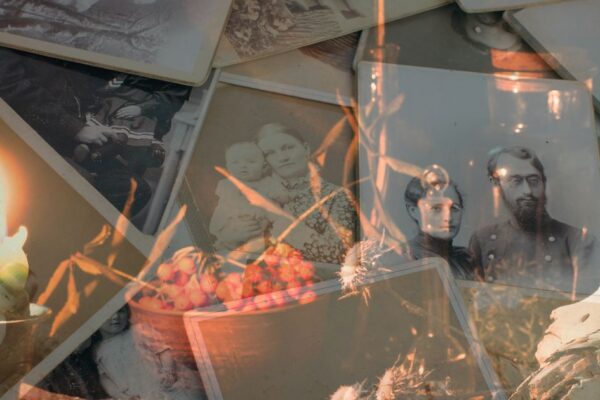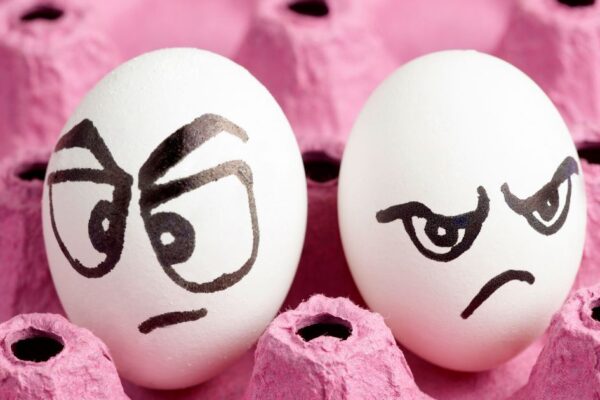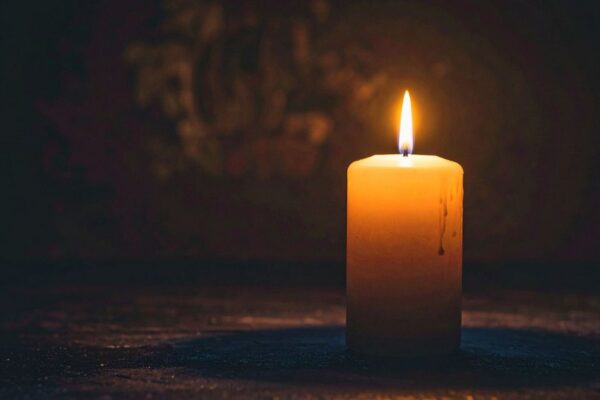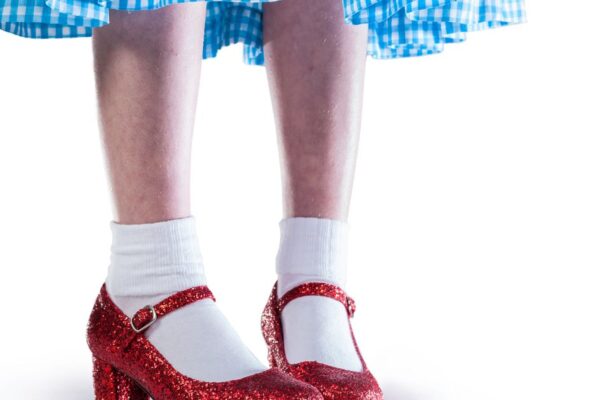Tarot cards date back to the 1400’s. They are not only used for divination but also for self-analysis and meditation. The 78 card deck is divided into 2 sections, the 22 major arcana cards and the 56 minor arcana cards. The major arcana deals with life events and is often referred to as The Fool’s Journey.
The journey through the major arcana is a metaphor for the journey through life. Each of the 22 cards (numbered 0-21) represents a point on the journey. The overall concept is that a person must move through these various stages in life in order to realise their true calling.
The Fool (0)The journey starts with The Fool. This is a card of innocence and new beginnings. He is only a fool because he has yet to gain the experience of life through the journey he is about to embark upon. He is new-born, ready and willing to experience all that life has to offer. He is unaware of the hardships or pain he may face on this journey.
The Magician (1) and the High Priestess (2)The Fool sets out and immediately encounters the Magician and the High Priestess. These 2 cards represent the balance and duality of human existence – the internal psyche. The Magician is the positive side and the High Priestess is the negative. These terms do not mean good and bad. Human distinctions like this have no place in the Tarot. Each is required for balance. Without dark we cannot have light – the two go hand in hand. Both these cards are equal in importance and value.
The Magician represents our conscious awareness whereas the High Priestess is the mysterious unconscious. While the Magician is the active, masculine power which underlies our creative impulse, the High Priestess represents our unrealised potential. She is the fertile ground where ideas can arise but we need the creative spark of the Magician to actually bring these ideas into reality.
The Empress (3)As the Fool grows he becomes more aware of the people around him. His Mother is the first person he recognises. This is the person who cares for him and nourishes him as he grows. This card also represents Mother Earth, the world of nature and sensation. Just like a small child who loves to explore everything he touches and tastes, the Fool cannot get enough of these new things that enchant his senses. He relishes the abundance of nature and the joy Mother Earth brings to his life.
The Emperor (4)The Emperor card represents the authoritative father figure. The Fool begins to learn that there are rules and patterns in the world that he must adhere to. He delights in finding this order to his world but may also struggle with the frustration of obeying those in authority. He becomes aware through the patient direction of the Emperor that there is a purpose to the rules and structure of his world.
The Hierophant (5)As the Fool grows he becomes exposed to the traditions, cultures and beliefs outside his own home. He begins his formal education and starts to identify himself with particular ways of life. This card can represent religious figures as the word hierophant means someone who interprets mysteries and arcane knowledge. This card also symbolises conformity as the Fool starts to fit in with the social structure around him.
The Lovers (6)As the Fool grows he starts to yearn for companionship and sexual union with another person. Up until now the Fool’s journey has been mainly self-centred. He now requires balance and wants to reach out and experience personal relationships. It is at this point that he must also decide on his own set of values and beliefs. He must become true to himself if he is to find happiness.
The Chariot (7)By this point in his journey the Fool has developed a certain amount of self-control and a sense of who he is. The Chariot represents his ego. He is in control of himself and asserts himself over all he surveys. He feels self-satisfied and victorious in his life. This is the unmistakeable confidence of youth.
Strength (8)As time passes the Fool encounters challenges and may have many occasions to draw on his inner strength to keep going. Life may be more difficult and he needs to discover his patience, tolerance and strength. The wilful command of the Chariot requires the balance of kindness and a softer more loving approach if he is to get through the set-backs he faces.
Hermit (9)At some point in all our lives we ask the question “Why?” The Fool becomes concerned with the search for answers and this card represents the need to look inward to find the deeper meaning of life. At this point on his journey the outside world begins to hold less attraction for him and he starts to seek moments of quiet and solitude. He may even seek out a teacher or guide to help him find the purpose of his life.
Wheel of Fortune (10)After a period of introspection the Fool begins to see how everything connects. He has a vision of the intricate design and cycles that make up his world. This card is a symbol of how the universe works in harmony. The Fool may briefly grasp some of the answers he has been seeking as life experiences come to him. Some of these events may seem like chance or fate and he may start to see his destiny as he is led to this turning point in his life. After much soul-searching he is ready to start moving again now that he seems himself as part of a much bigger plan.
Justice (11)It is at this point that the Fool must decide what his vision means to him personally. He starts to look back over his life to see how he has reached this point. He must take responsibility for his past actions so that he can make amends where necessary and move on with a clean slate. This is decision time – a time for important choices. Does the Fool remain true to the insights he has gleaned or will he slip back into old patterns and close himself off from further growth?
Hanged Man (12)The Fool is determined to realise his dreams but finds that life may not be so easily conquered. He experiences an event that is simply too difficult to endure and he has no choice but to give up and let go. Initially he feels completely lost and defeated. It is at this point that he can either lie down and accept defeat or simply relinquish control and trust that this too is part of his path. By surrendering control he learns a valuable truth – his Inner Self will support him. He learns to surrender to life’s experiences rather than trying to control them and he feels surprisingly free.
His world may have been turned upside-down but he can use this time to view things from a different angle. Look at the card, the Fool is the hanged man but looks serene and peaceful.
Death (13)This card represents the end of old habits and a new beginning. It is a card of transition. The Fool learns that he must cut away the dead wood and put old habits behind him if he is move on. Whilst change may be painful it is necessary to allow the Fool to experience a new and more fulfilling life.
Temperance (14)The Fool has come a long way from his time of solitude and introspection. He has experienced emotional extremes and challenges on his journey so far. He now realises that balance is key. Moderation in everything seems to be the way forward. Note the difference between the wilful force of the Chariot and the grace of the Temperance card. The Fool begins to glow with health and well-being.
Devil (15)It appears that the Fool now has everything he could need – his health, peace of mind and composure. The Fool, however, still pursues his desire for more and comes face to face with the Devil. This card represents the ignorance and hopelessness that resides within us all at some level. The Fool may be seduced by material distractions and become a slave to the grind. He doesn’t even realise that he has become such a slave but it begins to show itself as an undercurrent of despair and unhappiness. The Fool finds himself trapped within a self-made fortress and can see no way out.
Tower (16)How can the Fool rid himself of this sense of despair that has come from being seduced by the Devil’s materialism? It often takes a sudden and perhaps catastrophic change to release him from his inner prison.The Tower represents the walls we each build around ourselves which protect our inner being. Whilst we think these walls protect us they are actually a prison. This card shows a monumental crisis which shakes the foundations of the Tower and forces its occupants to come tumbling down.
The experience depicted in this card may be painful but the pain is worthwhile as the Fool is now free. His dark despair is blasted away allowing him to see the truth of the situation he is in.
Star (17)After the traumatic events of the Tower the Fool begins to be imbued with serene calm. The Star represents hope and inspiration. The Fool regains his faith in himself and the future. He recognises that the pain of the Tower has opened the way for better things to come. His heart begins to sing again and he is filled with joy and wonder once more. This is a moment of peace after the storm.
Moon (18)Could anything spoil this serenity for the Fool? At this point in his journey he is susceptible to fantasy and a false picture of the truth. The Moon stimulates imagination but can also cause the sub-conscious to bring hidden fears and anxieties to the surface. This leaves the Fool bewildered and a little lost. We can all identify with this feeling. Can you think of a time you went through difficult transition in your life? Afterwards whilst we are glad the event is over, we often have unrealistic views or thoughts of how to proceed. It is important therefore at this point that the Fool takes some time to analyse his thoughts and feelings as they may not be as valid as they appear to be.
Sun (19)The Sun shines its light into the hidden places of the Fool’s soul. The confusion and fear is dispelled and the Fool starts to feel and understand the goodness in the world. The Fool begins to have enthusiasm for life once more. He rides out joyously to face life once more. He feels alive and assured. He is finally able to realise his potential and greatness.
Judgement (20)Thanks to the trials and tribulations he has experienced thus far on his journey, the Fool has been reborn. He has turned away from his ego-driven life and has allowed his Inner Self to shine through. He realises that joy and love are at the centre of life, not fear.
He has learned to forgive himself and others. He knows that his real self is pure and good. He can see himself clearly for the first time and knows he has decisions to make about his future. He chooses wisely which values to cherish and which ones to throw away. He has discovered his true purpose and all hesitation vanishes allowing him to follow his dream at last.
World (21)The Fool has come full circle and re-enters the World. This time he is not the innocent and naïve person depicted by the Fool card. He now has a more complete understanding of himself and his place in the World. He has reached a new level of joy and fulfilment.
He knows that he must be actively involved in the world. He provides a service to others by sharing his unique gifts and talents. He acts from his Inner Self from a place of true certainty. He prospers from whatever he attempts and his future is full of promise.
So his journey was not so foolish after all. He has persevered and now has re-discovered the spontaneity that first compelled him to start out in the first place. This journey may be over but he will never stop learning and growing.
Soon he will be ready to start a new journey, one which will lead him to even greater self-understanding – and so the cycle begins again.






